Manila Metro Rail Transit System
| MRT Line 3 | ||||||||||||||||||||||||||||||||||||||||||||||||||||||||||||||||||||||||||||||||||||||||||||||||||||||||||||||||||||||||||||||||||||||||||||||||||||||||||||||||||||||||||||||||||||||||||||||||||
|---|---|---|---|---|---|---|---|---|---|---|---|---|---|---|---|---|---|---|---|---|---|---|---|---|---|---|---|---|---|---|---|---|---|---|---|---|---|---|---|---|---|---|---|---|---|---|---|---|---|---|---|---|---|---|---|---|---|---|---|---|---|---|---|---|---|---|---|---|---|---|---|---|---|---|---|---|---|---|---|---|---|---|---|---|---|---|---|---|---|---|---|---|---|---|---|---|---|---|---|---|---|---|---|---|---|---|---|---|---|---|---|---|---|---|---|---|---|---|---|---|---|---|---|---|---|---|---|---|---|---|---|---|---|---|---|---|---|---|---|---|---|---|---|---|---|---|---|---|---|---|---|---|---|---|---|---|---|---|---|---|---|---|---|---|---|---|---|---|---|---|---|---|---|---|---|---|---|---|---|---|---|---|---|---|---|---|---|---|---|---|---|---|---|---|
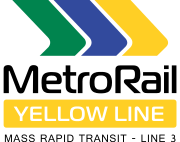 MRT3 | ||||||||||||||||||||||||||||||||||||||||||||||||||||||||||||||||||||||||||||||||||||||||||||||||||||||||||||||||||||||||||||||||||||||||||||||||||||||||||||||||||||||||||||||||||||||||||||||||||
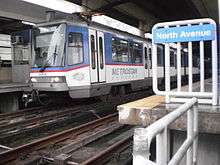 North Avenue station platform area and train Tatra RT8D5 | ||||||||||||||||||||||||||||||||||||||||||||||||||||||||||||||||||||||||||||||||||||||||||||||||||||||||||||||||||||||||||||||||||||||||||||||||||||||||||||||||||||||||||||||||||||||||||||||||||
| Overview | ||||||||||||||||||||||||||||||||||||||||||||||||||||||||||||||||||||||||||||||||||||||||||||||||||||||||||||||||||||||||||||||||||||||||||||||||||||||||||||||||||||||||||||||||||||||||||||||||||
| Type | Rapid transit / Light rail | |||||||||||||||||||||||||||||||||||||||||||||||||||||||||||||||||||||||||||||||||||||||||||||||||||||||||||||||||||||||||||||||||||||||||||||||||||||||||||||||||||||||||||||||||||||||||||||||||
| System | Manila Metro Rail Transit System | |||||||||||||||||||||||||||||||||||||||||||||||||||||||||||||||||||||||||||||||||||||||||||||||||||||||||||||||||||||||||||||||||||||||||||||||||||||||||||||||||||||||||||||||||||||||||||||||||
| Locale | Manila, Philippines | |||||||||||||||||||||||||||||||||||||||||||||||||||||||||||||||||||||||||||||||||||||||||||||||||||||||||||||||||||||||||||||||||||||||||||||||||||||||||||||||||||||||||||||||||||||||||||||||||
| Termini |
North Avenue Taft Avenue | |||||||||||||||||||||||||||||||||||||||||||||||||||||||||||||||||||||||||||||||||||||||||||||||||||||||||||||||||||||||||||||||||||||||||||||||||||||||||||||||||||||||||||||||||||||||||||||||||
| Stations | 13[1] | |||||||||||||||||||||||||||||||||||||||||||||||||||||||||||||||||||||||||||||||||||||||||||||||||||||||||||||||||||||||||||||||||||||||||||||||||||||||||||||||||||||||||||||||||||||||||||||||||
| Services | 1[2] | |||||||||||||||||||||||||||||||||||||||||||||||||||||||||||||||||||||||||||||||||||||||||||||||||||||||||||||||||||||||||||||||||||||||||||||||||||||||||||||||||||||||||||||||||||||||||||||||||
| Daily ridership |
450,000 (original capacity) 650,000 (2012-2013 record) | |||||||||||||||||||||||||||||||||||||||||||||||||||||||||||||||||||||||||||||||||||||||||||||||||||||||||||||||||||||||||||||||||||||||||||||||||||||||||||||||||||||||||||||||||||||||||||||||||
| Website | MRTC, DOTC-MRT3 | |||||||||||||||||||||||||||||||||||||||||||||||||||||||||||||||||||||||||||||||||||||||||||||||||||||||||||||||||||||||||||||||||||||||||||||||||||||||||||||||||||||||||||||||||||||||||||||||||
| Operation | ||||||||||||||||||||||||||||||||||||||||||||||||||||||||||||||||||||||||||||||||||||||||||||||||||||||||||||||||||||||||||||||||||||||||||||||||||||||||||||||||||||||||||||||||||||||||||||||||||
| Opened | December 15, 1999 | |||||||||||||||||||||||||||||||||||||||||||||||||||||||||||||||||||||||||||||||||||||||||||||||||||||||||||||||||||||||||||||||||||||||||||||||||||||||||||||||||||||||||||||||||||||||||||||||||
| Owner |
Metro Rail Transit Corporation Department of Transportation | |||||||||||||||||||||||||||||||||||||||||||||||||||||||||||||||||||||||||||||||||||||||||||||||||||||||||||||||||||||||||||||||||||||||||||||||||||||||||||||||||||||||||||||||||||||||||||||||||
| Operator(s) | Department of Transportation | |||||||||||||||||||||||||||||||||||||||||||||||||||||||||||||||||||||||||||||||||||||||||||||||||||||||||||||||||||||||||||||||||||||||||||||||||||||||||||||||||||||||||||||||||||||||||||||||||
| Rolling stock |
ČKD Tatra RT8D5 1st Generation LRV[3] CNR Dalian 8MLB 2nd Generation LRV [3] | |||||||||||||||||||||||||||||||||||||||||||||||||||||||||||||||||||||||||||||||||||||||||||||||||||||||||||||||||||||||||||||||||||||||||||||||||||||||||||||||||||||||||||||||||||||||||||||||||
| Technical | ||||||||||||||||||||||||||||||||||||||||||||||||||||||||||||||||||||||||||||||||||||||||||||||||||||||||||||||||||||||||||||||||||||||||||||||||||||||||||||||||||||||||||||||||||||||||||||||||||
| Track length | 16.9 km (10.5 mi) | |||||||||||||||||||||||||||||||||||||||||||||||||||||||||||||||||||||||||||||||||||||||||||||||||||||||||||||||||||||||||||||||||||||||||||||||||||||||||||||||||||||||||||||||||||||||||||||||||
| Track gauge | 1,435 mm (4 ft 8 1⁄2 in) standard gauge | |||||||||||||||||||||||||||||||||||||||||||||||||||||||||||||||||||||||||||||||||||||||||||||||||||||||||||||||||||||||||||||||||||||||||||||||||||||||||||||||||||||||||||||||||||||||||||||||||
| Minimum radius |
370 metres (400 yd) Mainline / 25 metres (82 ft) Depot | |||||||||||||||||||||||||||||||||||||||||||||||||||||||||||||||||||||||||||||||||||||||||||||||||||||||||||||||||||||||||||||||||||||||||||||||||||||||||||||||||||||||||||||||||||||||||||||||||
| Electrification | 750 V DC Overhead lines | |||||||||||||||||||||||||||||||||||||||||||||||||||||||||||||||||||||||||||||||||||||||||||||||||||||||||||||||||||||||||||||||||||||||||||||||||||||||||||||||||||||||||||||||||||||||||||||||||
| Operating speed | 40–60 km/h (25–37 mph) | |||||||||||||||||||||||||||||||||||||||||||||||||||||||||||||||||||||||||||||||||||||||||||||||||||||||||||||||||||||||||||||||||||||||||||||||||||||||||||||||||||||||||||||||||||||||||||||||||
| ||||||||||||||||||||||||||||||||||||||||||||||||||||||||||||||||||||||||||||||||||||||||||||||||||||||||||||||||||||||||||||||||||||||||||||||||||||||||||||||||||||||||||||||||||||||||||||||||||
The Manila Metro Rail Transit System also known as the MRT Line 3, MRT-3 or Metrostar Express is a rapid transit system of Metro Manila, Philippines. The line runs in an orbital north to south route following the alignment of the Epifanio de los Santos Avenue (EDSA). Although it has the characteristics of light rail, such as with the type of rolling stock used, it is more akin to a rapid transit system owing to its total grade separation and high passenger throughput.
Envisioned in the 1970s as part of the Metropolitan Manila Strategic Mass Rail Transit Development Plan, the thirteen-station, 16.9-kilometer (10.5 mi) line was the second rapid transit line to be built in Metro Manila when it started full operations in 2000 under a 25-year concession agreement between its private owners and the Philippine government's Department of Transportation (DOTr).
The line is owned by the Metro Rail Transit Corporation (MRTC), a private company operating in partnership with the DOTr under a Build-Lease-Transfer agreement. Serving close to 550,000 passengers on a daily basis when MRTC's maintenance provider, Sumitomo Corp. of Japan, was handling the maintenance of the system, MRT-3 is the busiest among Metro Manila's three rapid transit lines, built with essential standards such as barrier-free access and the use of contact-less card tickets to better facilitate passenger access. Total ridership significantly exceeds its built maximum capacity of 350,000 passengers a day, with various solutions being proposed or implemented to alleviate chronic congestion in addition to the procurement of new rolling stock.
Since 2006, the system's private owners had been offering various capacity expansion proposals to the DOTC. In 2014, after the DOTC's handling of the line's maintenance for two years amid questions about the line's structural integrity owing to the poor maintenance and the pronouncements that the system in general was safe, experts from MTR HK were commissioned to review the system. MTR HK made the opinion that the rail system was compromised due to the DOTC's poor maintenance.[4][5][6]
MRT-3 is integrated with the public transit system in Metro Manila, and passengers also take various forms of road-based public transport, such as buses, to and from a station to reach their intended destination. Although the line is aimed at reducing traffic congestion and travel time along EDSA, the transportation system has only been partially successful due to the DOTC's inaction on the private sector's proposals to expand the capacity of the system to take up to 1.1 million passengers a day. Expanding the network's capacity to accommodate the rising number of passengers is currently set on tackling this problem.
The MRT-3 line
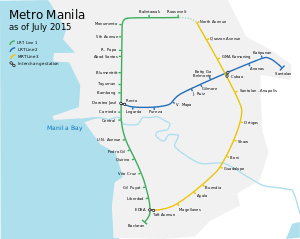
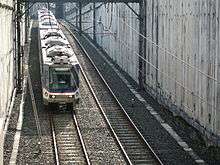
The line serves 13 stations on 16.9 kilometers (10.5 mi) of line,[1][2] spaced on average around 1,300 metres (4,300 ft) apart.[7] The rails are mostly elevated and erected either over or along the roads covered, with sections below ground before and after Buendia and Ayala stations, the only underground stations on the line. The southern terminus of the line is the Taft Avenue station at the intersection between Epifanio de los Santos Avenue and Taft Avenue, while the northern terminus is the North Avenue station along Epifanio de los Santos Avenue in Barangay Bagong Pag-asa, Quezon City. The rail line serves the cities that Circumferential Road 4 (Epifanio de los Santos Avenue) passes through: Pasay, Makati, Mandaluyong, San Juan and Quezon City.
Three stations currently serve as interchanges between the lines operated by the MRTC, Light Rail Transit Authority (LRTA), and Philippine National Railways (PNR). Magallanes station is near the PNR's EDSA station, while Araneta Center-Cubao Station is connected by a covered walkway to its namesake station of the LRT-2, and Taft Avenue station is connected via a covered walkway to the EDSA station of the LRT-1.
| Name | Distance (km) | Transfers | Location | |
|---|---|---|---|---|
| Between stations | From North Avenue | |||
| North Avenue Common Station |
— | — | LRT-1 MRT-7 LRT-5 |
Quezon City |
| North Avenue | — | — | none | |
| Quezon Avenue | — | — | ||
| Kamuning | — | — | ||
| Araneta Center–Cubao | — | — | LRT-2 | |
| Santolan–Annapolis | — | — | none | |
| Ortigas | — | — | Mandaluyong City | |
| Shaw Boulevard | — | — | ||
| Boni | — | — | ||
| Guadalupe | — | — | Makati City | |
| Buendia | — | — | ||
| Ayala | — | — | ||
| Magallanes | — | — | PNR MSC | |
| Taft Avenue | — | — | LRT-1 | Pasay City |
| Stations or Train Systems in italics are under construction. | ||||
The MRT-3 is open from 5:30 a.m. PST (UTC+8) until 11:00 p.m. on weekdays, and 5:30 a.m. PST (UTC+8) until 10:00 pm during weekends and holidays. It operates almost every day of the year unless otherwise announced. Special schedules are announced via the PA system in every station and also in newspapers and other mass media. During Holy Week, a public holiday in the Philippines, the rail system is closed for annual maintenance, owing to fewer commuters and traffic around the metro. Normal operation resumes after Easter Sunday.[8]
The MRT-3 has experimented with extended opening hours, the first of which included 24-hour operations beginning on June 1, 2009 (primarily aimed at serving call center agents and other workers in the business process outsourcing sector).[9] Citing low ridership figures and financial losses, this was suspended after two days, and operations were instead extended from 5:00 a.m. to 1:00 a.m.[10] MRT-3 operations subsequently returned to the former schedule by April 2010, but services were again extended starting March 10, 2014, with trains running on a trial basis from 4:30 am to 11:30 pm in anticipation of major traffic buildup in light of several major road projects beginning in 2014.[11]
History
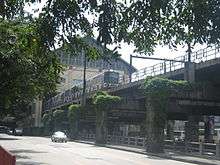
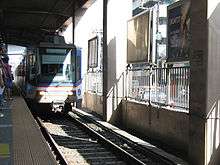
During the construction of the first line of the Manila Light Rail Transit System in the early 1980s, Electrowatt Engineering Services of Zürich designed a comprehensive plan for metro service in Metro Manila. The plan—still used as the basis for planning new metro lines—consisted of a 150-kilometer (93 mi) network of rapid transit lines spanning all major corridors within 20 years,[12] including a line on Epifanio de los Santos Avenue, the region's busiest road corridor.
The MRT-3 (originally LRT-3) project officially began in 1989, five years after the opening of the LRT Line 1, with the Hong Kong-based EDSA LRT Corporation winning the public bidding for the line's construction during the term of President Corazon Aquino.[7] However, construction could not commence, with the project stalled as the Philippine government conducted several investigations into alleged irregularities with the project's contract.[13] In 1995, the Supreme Court upheld the regularity of the project (G.R. No. 114222, April 6, 1995) which paved the way for construction to finally begin during the term of President Fidel V. Ramos. A consortium of local companies, led by Fil-Estate Management, Ayala Land, and 5 others, later formed the Metro Rail Transit Corporation (MRTC) in June 1995 and took over the EDSA LRT Corporation.[7]
The MRTC was subsequently awarded a Build-Lease-Transfer contract by the DOTC, which meant that the latter would possess ownership of the system after the 25-year concession period. Meanwhile, the DOTC would assume all administrative functions, such as the regulation of fares and operations, leaving the MRTC responsibility over construction and maintenance of the system as well as the procurement of spare parts for trains. In exchange, the DOTC would pay the MRTC monthly fees for a certain number of years to reimburse any incurred costs.[14]
Construction began on the fifteenth of October 1996, with a BLT agreement signed between the Philippine government and the MRTC.[7] An amended turnkey agreement was later signed on September 16, 1997 with a consortium of companies (including Mitsubishi Heavy Industries and Sumitomo Corporation. A separate agreement was signed with CKD Dopravny Systemy (ČKD Tatra, now part of Siemens AG), the leading builder of trams and light rail vehicles for the Eastern Bloc, on rolling stock. MRTC also retained the services of ICF Kaiser Engineers and Constructors to provide program management and technical oversight of the services for the design, construction management and commissioning.[15]
During construction, the MRTC oversaw the design, construction, equipping, testing, and commissioning, while the DOTC oversaw technical supervision of the project activities covered by the BLT contract between the DOTC and MRTC. The DOTC also sought the services of Systra, a French consultant firm, with regards to the technical competence, experience and track record in the construction and operations.[15]
On December 15, 1999, the initial section from North Avenue to Buendia was inaugurated by President Joseph Estrada,[16] with all remaining stations opening on July 20, 2000, a little over a month past the original deadline.[17] However, ridership was initially far below expectations when the line was still partially open, with passengers complaining of the tickets' steep price and the general lack of connectivity of the stations with other modes of public transportation.[18] Passengers' complaint of high ticket prices pointed to the maximum fare of ₱34, which at the time was significantly higher than a comparable journey on those lines operated by the LRTA and the PNR or a similar bus ride along EDSA. Although the MRTC projected 300,000-400,000 passengers riding the system daily, in the first month of operation the system saw a ridership of only 40,000 passengers daily (the ridership improved quickly, however, when passengers experienced significantly faster and convenient travel along EDSA, which experience soon spread by word of mouth).[19] The system was also initially criticized as a white elephant, comparing it to the Manila Light Rail Transit System and the Metro Manila Skyway.[20] To alleviate passenger complaints, the MRTC later reduced passenger fares to ₱15, as per the request of then President Joseph Estrada and a subsequent government subsidy.
By 2004, the MRT-3 had the highest ridership of the three lines, with 400,000 passengers daily. By early 2015, the system was carrying around 550,000 commuters during weekdays and was often badly overcrowded during peak times of access during the day and night.
On August 13, 2014, a train at the Taft Avenue station became derailed and overshot to the streets. First the train stopped after leaving Magallanes station (the station before the Taft Avenue station) due to a technical problem. Later, the train broke down, so that a following train was used to push the stalled train. During this process, however, the first train was detached from the rails and overshot towards Taft Avenue, breaking the concrete barriers and falling to the street below. At least 38 people were injured.[21] The accident was blamed on poor maintenance provided by the DOTC-appointed provider.
On November 14, 2017, 24-year-old Angeline Fernando, a student from Pasay City lost her right arm in an accident at the Ayala station in Makati City, after she alighted from the train when she felt dizzy and fell on to the station's tracks. Doctors re-attached her arm.[22]
But two weeks later after the said freak accident at Ayala station, on November 16, 2017, at 11:30 AM, at least 140 passengers were evacuated from a "detached train" coach between the railway lines of Buendia and Ayala Avenue Stations.[23]
Station facilities, amenities, and services

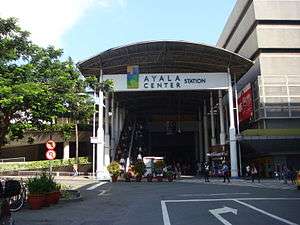

With the exception of Buendia Avenue and Ayala Avenue stations, and the platform level of Taft Avenue and Boni Avenue stations, all stations are situated above ground, taking advantage of EDSA's topology.[24]
Station layout and accessibility
MRT-3 stations have a standard layout, with a concourse level and a platform level. The concourse is usually above the platform, with stairs, escalators and elevators leading down to the platform level. Station concourses contain ticket booths, which is separated from the platform level by fare gates.[7] Some stations, such as Araneta Center-Cubao, are connected at concourse level to nearby buildings, such as shopping malls, for easier accessibility. Most stations are also barrier-free inside and outside the station, and trains have spaces for passengers using wheelchairs.[7]
Stations either have island platforms, such as Taft Avenue and Shaw Boulevard, or side platforms, such as Ortigas and North Avenue. Due to the very high patronage of the MRT3 system, part of the platform corresponding to the front car of the train is cordoned off for the use of women, children, elderly and disabled passengers.
MRT-3 stations are also designed to occupy the entire span of EDSA, allowing passengers to safely cross between one end of the road and the other.[7]
Shops and services
Inside the concourse of all stations are stalls or shops where people can buy food or drinks. Stalls vary by station, and some have fast food stalls. The number of stalls also varies by station, and stations tend to have a wide variety, especially in stations such as Ayala and Shaw Boulevard.
Stations such as Taft Avenue and North Avenue are connected to or are near shopping malls and/or other large shopping areas, where commuters are offered more shopping varieties.
Since November 19, 2001, in cooperation with the Philippine Daily Inquirer, passengers are offered copies of the Inquirer Libre, a free, tabloid-size, Tagalog version of the Inquirer, which is available at all MRT-3 stations.[25] In 2014, Pilipino Mirror also started distributing free tabloid newspapers.
Safety and security
The MRT-3 has always presented itself as a safe system to travel in, which was affirmed in a 2004 World Bank paper prepared by Halcrow describing the overall state of metro rail transit operations in Manila as being "good".[26] However, in recent years after the DOTr (formerly DOTC) took over maintenance of the train system in 2012, the safety and reliability of the system has been put into question, with experts calling it "an accident waiting to happen", and while several incidents and accidents were reported between 2012 and 2014, that has not deterred commuters from continuing to patronize the system.[27] The Philippine government, meanwhile, continues to assert that the system is safe overall despite those incidents and accidents.[28]
With a current daily ridership of around 560,000 passengers, the MRT-3 operates significantly above its designed capacity of between 360,000 and 380,000 passengers per day.[29] Operating over capacity since 2004,[6] government officials have admitted that capacity and system upgrades are overdue,[30] although the DOTr (formerly DOTC) never acted on the numerous capacity expansion proposals of the private owners. In the absence of major investment in improving system safety and reliability, DOTr (formerly DOTC) management of the MRT-3 has resorted to experimenting with and/or implementing other solutions to reduce strain on the system, including crowd management on station platforms,[31] the proposed implementation of peak-hour express train service.[32] However, some of these solutions, such as platform crowd management, are unpopular with passengers.[33]
For safety and security reasons, persons who are visibly intoxicated, insane and/or under the influence of controlled substances, persons carrying flammable materials and/or explosives, persons carrying bulky objects or items over 1.5 metres (5 ft) tall and/or wide, and persons bringing pets and/or other animals are prohibited from entering the MRT-3.[34] Products in tin cans are also prohibited on board the MRT-3, citing the possibility of home-made bombs being concealed inside the cans.[35]
In 2000 and 2001, in response to the Rizal Day bombings and the September 11th attacks, security was stepped up on the MRT-3. The Philippine National Police has a special police force on the MRT-3,[36] and security police provided by private companies can be found in all MRT-3 stations. All MRT-3 stations have a head guard. Some stations may also have a deployed K9 bomb-sniffing dog. The MRT-3 also employs the use of closed-circuit television inside all stations to monitor suspicious activities and to assure safety and security aboard the line. Passengers are also advised to look out for thieves, who can take advantage of the crowding aboard MRT-3 trains. Wanted posters are posted at all MRT-3 stations to help commuters identify known thieves.
Fares and ticketing
.jpg)
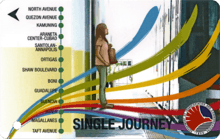
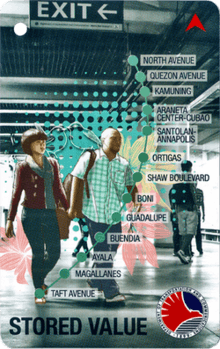
The MRT-3, like the LRT-1 and LRT-2, uses a distance-based fare structure, with fares ranging from 13 to 28 pesos (29 to 63 U.S. cents), depending on the destination. Commuters who ride the MRT-3 are charged ₱13 for the first two stations, ₱16 for 3–4 stations, ₱20 for 5–7 stations, ₱24 for 8–10 stations and ₱28 for 11 stations or the entire line. Children below 1.02 meters (3 ft 4.4 in) (the height of a fare gate) may ride for free on the MRT-3.
Types of tickets
Magnetic tickets (1999–2015)
Two types of MRT-3 tickets exist: a single-journey (one-way) ticket whose cost is dependent on the destination, and a stored-value (multiple-use) ticket for 100 pesos. The 200-peso & 500-peso stored-value tickets were issued in the past, but have since been phased out. The single-journey ticket is valid only on the date of purchase. Meanwhile, the stored-value ticket is valid for three months from date of first use.[34]
MRT-3 tickets come in several incarnations: these include tickets bearing the portraits of former presidents Joseph Estrada and Gloria Macapagal-Arroyo,[37] which have since been phased out, and one bearing the logos of the DOTC and the MRTC. Ticket shortages are common: in 2005, the MRTC was forced to recycle tickets bearing Estrada's portrait to address critical ticket shortages, even resorting to borrowing stored-value tickets from the LRTA[38] and even cutting unusable tickets in half for use as manual passes. Shortages were also reported in 2012,[39] and the DOTC was working on procuring additional tickets in 2014.[40] Because of the ticket shortages, it had become common practice for regular passengers to purchase several stored-value tickets at a time, though ticket shortages still persist.[41]
Although the MRT-3 has partnered with private telecommunications companies in experimenting with RFID technology as an alternative ticketing system in the past,[42][43] these were phased out in 2009.[44]
Beep cards (2015–present)
Currently, inter-operable beep cards with similar-to-the-previous single-journey and stored-value ticket types are now issued, along with the deployment of brand-new ticketing machines that replaced the barely-used ticketing machines that has been in place since the line's inauguration. The beep, tap-and-go tickets, loadable up to ₱10,000 can be used in all three rail lines since December 2015.
Fare adjustment
Adjusting passenger fares was ordered by President Joseph Estrada as a means to boost flagging ridership figures,[45] and the issue of MRT-3 fares both historically and in the present day continues to be a contentious political issue involving officials at even the highest levels of government.
Current MRT-3 fare levels were set on January 4, 2015 as a consequence of DOTr (formerly DOTC) having to increase fares for the LRT-1 as per their concession agreement with MPIC-Ayala, with fare hikes delayed for several years despite inflation and rising operating costs.[46] Prior to the current fares levels, MRT-3 fares were set on July 15, 2000 under the orders of then President Estrada; this was intended to have the MRT-3 become competitive against other modes of transport,[47] but had the effect of causing revenue shortfalls which the government shouldered. While originally set to last only until January 2001,[47] the new fare structure persisted due to strong public opposition against increasing fares,[48] especially as MRT-3 ridership increased significantly after lower fares were implemented.[45] These lower fares—which are only slightly more expensive than jeepney fares—ended up being financed through large government subsidies amounting to around ₱45 per passenger,[48][49] and which for both the MRT and LRT reached ₱75 billion for the 10-year period between 2004 and 2014.[50] Without subsidies, the cost of a single MRT-3 trip is estimated at around ₱60,[49] and a ₱10 increase in fares would yield additional monthly revenues of ₱2-3 billion a month.[51]
Passenger fare subsidies are unpopular outside Metro Manila, with subsidy opponents claiming that their taxes are being used to subsidize Metro Manila commuters without any benefit to the countryside, and that the fare subsidies should be used for infrastructure improvements in the rest of the country.[52] In his 2013 State of the Nation Address, President Benigno Aquino III claimed that it would be unfair for non-Metro Manila residents to use their taxes to subsidize the LRT and MRT.[53] However, supporters of the subsidies claimed that the rest of the country benefits economically from efficient transportation in Metro Manila.[54]
Rolling stock
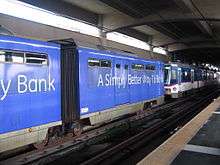
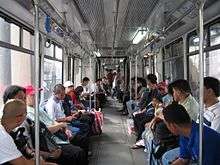
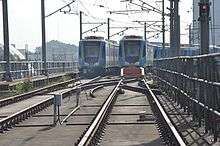
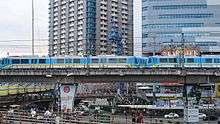
| Model | Tatra RT8D5 (1st Generation)[55] 0100/3000 Series | CRRC Dalian 8MLB (2nd Generation) 3100 series |
|---|---|---|
| Number Built | 73 (6 cars in service)[56] | 48 cars (under Evaluation) |
| Country of Origin | ||
| Length per Car | 33,000 mm (31,720 mm w/couplers) | ~33,000 mm (31,720 mm w/couplers) |
| Width | 2,480 mm | ~2500 mm |
| Height (pantograph lowered) | 3550 mm | ~3724 mm |
| Door Height | 1900 mm | ~1900 mm |
| Door Width Middle-End | 1255 mm-861 mm | ~1255 mm-861 mm |
| Floor Height | 925 mm | Unknown |
| Minimum Turning Radius Mainline-Depot | 20 m-20 m | ~Max. 300 m Mainline – 25 m Depot |
| Empty Weight | 46,800 kg | 49,700 kg[56] |
| Body shell material | Low alloy high tensile steel (aluminum for ceiling) | Unknown |
| Electrification | 750 V DC Overhead Line | 750 V DC Overhead Line |
| Transmission | Right-angle Cardan drive | Quill drive |
| Traction Controller | IGBT Chopper(ČKD) | IGBT-VVVF(Voith) |
| Traction Motor | 64.5 kW DC motor | 120 kW Three phase induction motor (Totally enclosed/Self ventilating) |
| Seating Capacity | 74 | Unknown |
| Standing Capacity @ 8 passengers per m^2 | 320 | Unknown |
| Operating Speed | 65 kph (currently 40 kph due to degraded rails) | 65 kph |
| Acceleration | 1.03 m/s^2 | at least 1.03 m/s^2 |
| Deceleration Service Brake-Emergency Braking | 1.01 m/s^2-1.58 m/s^2 | at least 1.01 m/s^2-1.58 m/s^2 |
| Max Gradient | 5% | at least 5% |
| Configuration | 3 car (4 car Planned) | 3 car / 4 car |
| Combined Passenger Capacity (3/4 Car) | 1182/1576 Passengers | 1182[56]/1576 Passengers |
| Wheelbase | 1900 mm | ~1900 mm |
The MRT-3 owns 73 light rail vehicles (LRV) made in the Czech Republic by ČKD (now part of Siemens AG) in a three-car configuration, majority of which are now broken due to poor maintenance since 2012 by DOTr (formerly DOTC).[3] The LRV's were purchased with export financing from the Czech government.[57] Trains have a capacity of 1,182 passengers,[3] which is smaller than the normal capacity of LRT Line 1 first generation rolling stock, although MRT-3 trains came with air conditioning. Despite this, the MRT-3 is designed to carry in excess of 23,000 passengers per hour per direction (PPHPD), and is expandable to accommodate 48,000 passengers per hour per direction.[2]
However, due to DOTr's poor maintenance, the line currently operates with 7-10 minute headways,[58] and the system's passenger volume is presently closer to 14,000–18,000 passengers per hour per direction.
By 2018, lack of spare parts for the trains decreased the number of usable trains to just 3 operational trains running during peak hours,[59] however by April 2018, 14-16 trains are now operational.[60]
Depot
The MRT-3 maintains an underground depot in Quezon City, near North Avenue station. On top of the depot is TriNoma, a shopping mall owned by the Ayala Corporation. The depot occupies 84,444 square meters (908,948 sq ft) of space and serves as the headquarters for light and heavy maintenance of the MRT-3, as well as the operations of the system in general. It is connected to the main MRT-3 network by a spur line. The depot is capable of storing 81 light rail vehicles, with the option to expand to include 40 more vehicles as demand arises. They are parked on nine sets of tracks, which converge onto the spur route and later on to the main network. However, a lot of rail tracks for storage inside the depot were taken by DOTr to repair broken rails, as DOTr's appointed maintenance provider did not purchase spare rails.
Maintenance
| Firm | From | Until | |
|---|---|---|---|
| Sumitomo Group | January 1, 2001 | October 18, 2012 | |
| PH Trams CB & T | October 19, 2012 | September 3, 2013 | |
| Global APT | September 4, 2013 | July 4, 2015 | |
| SBI CB & T | July 5, 2015 | January 8, 2016 | |
| Busan Universal Rail, Inc. | January 9, 2016 | November 5, 2017 | |
| Department of Transportation[62] | November 6, 2017 | present | |
Under DOTC Secretary Abaya
By 2014 the MRT-3 was seen to have significantly deteriorated due to the removal of tested maintenance provider Sumitomo Corp. in 2012 by the then Department of Transportation (DOTr) and its persistence in using unqualified maintenance providers. The government of Benigno Aquino III had been planning to buy the MRT-3 from the MRT Corporation (MRTC), the company that built the MRT-3, and then bid it out to private bidders. The Aquino government accused the MRTC of neglecting and not improving the services of the MRT-3 under its watch.[63]
In February 2016, the Philippine Senate released a report stating that DOTC Secretary Jun Abaya and other DOTC officials "may have violated" the Anti-Graft and Corrupt Practices Act in relation to questionable contracts with MRT-3's subsequent maintenance providers.[64] In a Senate report where the MRT's condition was found to be in "poor maintenance" as per studies made by MTR HK,[65] DOTC officials were reported to be involved in graft in relation to questionable contracts, especially those for the maintenance of the MRT-3.[66]
Under Busan Universal Rail Inc. (2016-17)
A Korean-Filipino consortium, Busan Universal Rail Inc. (BURI), became the maintenance provider of the MRT-3 line on January 2016. In 2017, DOTC's succeeding agency, the Department of Transportation (DOTr) attributed the operations distruptions of the rail system to BURI with Transport Undesecratary noting 98 service interruptions and 833 passenger unloadings (or average of twice daily) as well as train derailments in April–June 2017.[61]
BURI insisted that the disruptions the railway line was experiencing is due to "inherent design and quality concerns" and not to poor maintenance or normal tear or wear. It said that the trains had "excessive lateral movement", the train-protection equipment has a "short delay time", the trains' air conditioning system were "underrated", and other equipments and features such as bogie frames, couplers, line contractors, and tracks are of "poor quality".[67]
The maintenance provider also said that the design flaws in the railway line has been causing distruptions since the MRT-3's first year of operation in the year 2000. According to data cited by BURI a 1,492 glitches were recorded in 2000, 1,927 glitches in 2008 and the figure rose to 2,199 in 2009. MRT Corp. the owner of the line dismissed BURI's claim on the train's lateral movement and said that the issues raised by the firm were absent when the line was maintained by Sumitomo.[67]
The DOTr announced its intentions on August 24, 2017 to terminate its contract with BURI.[68] By October 2017, the government agency issued its termination notice and took over maintenance of MRT-3 by November 2017.[62]
The Return of Sumitomo
The government plans to replace BURI with the maintenance provider of Singapore's MRT, France's RATP, or Sumitomo back as MRT-3's maintenance provider.[62] In late-November it was reported that Sumitomo will return as the maintenance provider of MRT-3 with an agreement to formalize the beginning of talks to facilitate the return of the firm within the later-half of December 2017. The DOTr projects that Sumitomo could work with the MRT-3 line again by around October-December 2018.[69]
Plans
Capacity Expansion Project
Due to the high ridership of the line, a proposal under study by the DOTC and NEDA proposed to double the current capacity by acquiring additional light rail vehicles to accommodate the 520,000 passenger a day requirement.[70]
In line with this need, the DOTC secured the procurement of a total of 48 LRVs (Light Rail Vehicles) or 16 trains from Chinese firm CRRC Dalian. Delivery had already commenced last January 2016 and will continue until January of the following year. The introduction of the new LRVs will allow the MRT to now handle over 800,000 passengers.[71]
The first train was scheduled to be in revenue service before April 2016[72][73] but delays in its 5,000 km run test had delayed its deployment for Revenue service.[74][75] Moreover, further tests and analysis of the new trains revealed several incompatibilities that made it unable to run along the lines safely, which was a subject of audit from TuV Rheinland, hired by the DOTr to determine the true usability of the trains.
Later, it was revealed that several adjustments to the Dalian trains are required prior to revenue run deployment.[76] The train manufacturer Dalian has agreed to amend the train specifications to match the contract terms at no cost, and will do so in the soonest possible time.[77]
North Extension
Although Phase 1 of the MRT-3 (Taft Ave. to North Ave.) has already been built, the route envisioned by the DOTC and the government in general was for the MRT-3 to traverse the entire length of EDSA (from Monumento to Taft Avenue), eventually connecting to Line 1 at Monumento in Caloocan (MRT-3 Phase 2) to create a seamless rail loop around Metro Manila. The expansion has been shelved by then President Gloria Arroyo in favor of the LRT-1's extension from Monumento to a new common station that it will share with the MRT-3 at North Avenue, thus closing the loop. However, this move of President Arroyo to take away Phase 2 of the MRT-3 had proven to be ill-advised as the ridership is very low at only about 30,000 passenger a day. The southern terminus of the MRT-7 (originally LRT-4 along Quezon Blvd., but had since changed route several times), which will link Quezon City, Caloocan (north), and San Jose del Monte City, Bulacan will be sharing the same station.
The National Economic and Development Authority as well as then President Arroyo herself have said that the MRT3-LRT1 link at North Avenue is a national priority, since it would not only provide seamless service between the LRT-1 and the MRT-3, but would also help decongest Metro Manila.[78] It is estimated that by 2010, when the extension is completed, some 684,000 commuters would use the MRT-3 everyday from the present 400,000, and traffic congestion on EDSA would be cut by as much as 50%.[79]
Proposals to fully unite MRT-3 and LRT-1 operations, trains and systems have been pitched but has not been pursued so far. Feasibility tests for this proposition included LRT-1 trains visiting MRT-3 depot facilities and running them on the entire line. It has since been shelved for undisclosed reasons, but may be a possibility should Manny Pangilinan's Metro Pacific attempts to purchase the entire system succeed. If and when this happens, the system may be theoretically controlled or connected to LRT-1's current operating concessionaire, LRMC (Light Rail Manila Consortium), of whom Pangilinan has a controlling stake, paving the way to a possible line merger.
Common station with LRT-1, MRT-7, and the proposed Metro Manila Subway
On November 21, 2013, the NEDA board, chaired by then Former President Benigno Aquino III, approved the construction of a common station within North Avenue between SM North EDSA and TriNoma Mall. It is estimated to cost 1.4 billion pesos. It will feature head-to-head platforms for LRT-1 and MRT-3 trains with a 147.4-meter elevated walkalator to MRT-7.[80] SM Investments Corporation posted 200 million pesos for the naming rights of the common station.[81] This is inconsistent with the original plan of having seamless connectivity to Monumento and is also an unusual arrangement of having two train stations beside each other. However, the project was shelved indefinitely due to disputes over cost, engineering issues and naming rights.[82] Even if the physical infrastructure connecting the two rail systems are in place and successfully tested, commuters have to go down at the Roosevelt station of LRT-1 and walk over or take a tricycle or jeepney for the one kilometer distance to the Trinoma terminal of MRT-3.[83] The Supreme Court halted the construction of the project in August 2014 after SM Prime Holdings contested the new location near Trinoma.[84][85] An agreement was later reached under the administration of President Rodrigo Duterte, and the common station is now under construction.[86]
Transfer of operations from MRTC to LRTA
Recently, a new study for the Metro Manila Rail Network has been unveiled by DOTC Undersecretary for Public Information Dante Velasco that LRT 1, LRT 2, and MRT 3 will be under one management, the Light Rail Transit Authority. This is due to maintenance cost issues for Line 1's maintenance cost, which is approximately ₱35 million, along with Line 2's ₱25 million and Line 3's ₱54 million maintenance costs. Another reason for this study is for the unification of the LRT 1 and the MRT 3 lines. According to DOTC Undersecretary for Rails Glicerio Sicat, the transfer was set by the government in June 2011.[87] However, it is unlikely that the private owners, MRTC, will approve this plan.
On January 13, 2011, Light Rail Transit Authority Chief Rafael S. Rodriguez took over as officer-in-charge of MRT-3 in preparation for the integration of operations of the Yellow, Purple, and Blue Lines.[88] But with the entry of a new leadership into the MRTC that year and in 2012, the transfer was deemed not likely to happen; however, in April 2012, a LRT-1 trainset made the first trial journey to the MRT-3 depot.
On May 26, 2014, MRT's general manager Al Vitangcol was sacked by Transportation and Communication Secretary Joseph Emilio Abaya, and was replaced by LRTA Administrator Honorito Chaneco as officer-in-charge. The move came after Vitangcol was accused by the ambassador of the Czech Republic of extortion and for awarding an anomalous deal, the maintenance contract, to an uncle-in-law.[89]
See also
References
- 1 2 "About Us – MRT3 Stations". Metro Rail Transit. Archived from the original on January 22, 2013. Retrieved June 8, 2014.
- 1 2 3 "About Us – Background". Metro Rail Transit. Archived from the original on May 8, 2014. Retrieved June 8, 2014.
- 1 2 3 4 "About Us – MRT3 Trains". Metro Rail Transit. Archived from the original on May 8, 2014. Retrieved June 8, 2014.
- ↑ Salazar, Irineo B. R. (2016-01-31). "On a clear day you can see the MRT". The Society of Honor by Joe America. Retrieved 2016-07-20.
- ↑ "Poe's Senate panel to resume hearing on MRT". Retrieved 2016-07-20.
- 1 2 Amojelar, Darwin G. (August 14, 2014). "DERAILED | 5 things you should know about MRT3 and the mess it's in". TV5 News and Information. Archived from the original on August 16, 2014. Retrieved August 17, 2014.
- 1 2 3 4 5 6 7 Anonas, Alma S. (June 10, 1999). "On track and heading for Year 2K on MRT-3". Manila Standard. Kamahalan Publishing Corporation. Retrieved January 21, 2014.
- ↑ Ronda, Rainier Allan (March 31, 2010). "LRT, MRT closed for Holy Week". The Philippine Star. PhilStar Daily, Inc. Retrieved August 21, 2014.
- ↑ Olchondra, Riza T. (May 29, 2009). "MRT-3 rides to go 24 hours starting June 1". Philippine Daily Inquirer. Philippine Daily Inquirer, Inc. Archived from the original on May 30, 2009. Retrieved May 31, 2009.
- ↑ Kwok, Abigail (June 3, 2009). "MRT-3 stops 24-hour run". Philippine Daily Inquirer. Philippine Daily Inquirer, Inc. Archived from the original on October 27, 2014. Retrieved March 11, 2014.
- ↑ Camus, Miguel R.; Calleja, Niña P. (February 21, 2014). "DOTC extends MRT-3 operating hours". Philippine Daily Inquirer. Philippine Daily Inquirer, Inc. Retrieved March 11, 2014.
- ↑ "Light Rail Transit Authority Company History". Light Rail Transit Authority. Archived from the original on September 24, 2014. Retrieved September 13, 2014.
- ↑ Macaspac, Joem H.; Garcia, Ma. Luisa M. (March 28, 1996). "First phase of Edsa metro rail transit system under way". Manila Standard. Kamahalan Publishing Corporation. Retrieved January 21, 2014.
- ↑ Background Archived June 26, 2006, at the Wayback Machine., Metro Rail Transit Corporation History, retrieved July 7, 2006
- 1 2 Construction Archived June 26, 2006, at the Wayback Machine., Metro Rail Transit Corporation History, retrieved July 7, 2006
- ↑ "Miracle rail project to rid Edsa of jams". New Straits Times. The New Straits Times Press (M) Bhd. December 15, 1999. Retrieved January 21, 2014.
- ↑ "MRT 3 Fully Completed; Inauguration, Turnover Set on July 20". Manila Bulletin. Manila Bulletin Publishing Corporation. July 16, 2000. Retrieved August 14, 2014 – via HighBeam. (Subscription required (help)).
- ↑ Trinidad, Andrea H. (January 2, 2000). "Metrostar Express proves a big disappointment". Philippine Daily Inquirer. Philippine Daily Inquirer, Inc. Retrieved January 21, 2014.
- ↑ Rivera, Blanche S. (January 13, 2000). "Metro trains on EDSA running almost empty". Philippine Daily Inquirer. Philippine Daily Inquirer, Inc. Retrieved January 21, 2014.
- ↑ Katigbak, J.R. (January 8, 2000). "New white elephants in Metro Manila". Philippine Daily Inquirer. Philippine Daily Inquirer, Inc. Retrieved January 21, 2014.
- ↑ "MRT Gets Derailed".
- ↑ "Woman loses right arm in MRT 3 accident". GMA News. November 14, 2017. Retrieved November 14, 2017.
- ↑ "Up to 140 MRT3 riders evacuated from 'detached train'". GMA News. November 16, 2017. Retrieved November 16, 2017.
- ↑ Satre, Gary L. (June 1998). "The Metro Manila LRT System—A Historical Perspective" (PDF). Japan Railway and Transport Review. 16: 33–37. Retrieved August 14, 2014.
- ↑ Ulanday, Abelardo S. (December 9, 2001). "'The best things in life are Libre'". Philippine Daily Inquirer. Philippine Daily Inquirer, Inc. Retrieved August 14, 2014.
- ↑ World Bank (December 2, 2004). "A Tale of Three Cities: Urban Rail Concessions in Bangkok, Kuala Lumpur and Manila – Final Report" (PDF). Author: 17. (Prepared by Halcrow Group Limited).
- ↑ "Months ago, experts warned MRT was unsafe". ABS-CBN News and Current Affairs. August 13, 2014. Retrieved August 17, 2014.
- Ayalin, Adrian (August 15, 2013). "MRT-3: A history of accidents". Primetime on ANC. ABS-CBN News Channel.
- ↑ Hegina, Aries Joseph (August 14, 2014). "Abaya: MRT3 is safe, riding it 'a personal decision'". Philippine Daily Inquirer. Philippine Daily Inquirer, Inc. Retrieved August 21, 2014.
- ↑ "Abaya: MRT-3 operating at overcapacity". ABS-CBN News and Current Affairs. February 27, 2014. Retrieved August 17, 2014.
- ↑ Cupin, Bea (August 14, 2014). "Abaya admits MRT-3 upgrade overdue". Rappler. Rappler, Inc. Retrieved August 17, 2014.
- ↑ Manabat, Johnson (December 18, 2013). "MRT enforces new crowd control scheme". ABS-CBN News and Current Affairs. Retrieved August 17, 2014.
- ↑ Camus, Miguel R. (May 6, 2014). "All is set for MRT-3 express train run". Philippine Daily Inquirer. Philippine Daily Inquirer, Inc. Retrieved August 18, 2014.
- ↑ Camus, Miguel R. (December 20, 2013). "MRT boss defends 'crowd control' amid jeering riders". Philippine Daily Inquirer. Philippine Daily Inquirer, Inc. Retrieved August 17, 2014.
- 1 2 "MRT3 Reminders". Metro Rail Transit Line 3. Metro Rail Transit Corporation. Archived from the original on August 19, 2014. Retrieved August 17, 2014.
- ↑ Antiporda, Jefferson (August 10, 2005). "MRT issues directive imposing ban on tin cans". The Manila Times. Manila Times Publishing Corporation. Archived from the original on August 19, 2006. Retrieved May 19, 2006.
- ↑ Del Puerto, Luige A.; Quismundo, Tarra V. (November 13, 2004). "New task force formed to keep LRT, MRT safe". Philippine Daily Inquirer. Philippine Daily Inquirer, Inc. Archived from the original on January 4, 2005. Retrieved May 19, 2006.
- ↑ Araneta, Sandy (October 21, 2005). "DOTC: MRT fare could increase by P10 in 2006". The Philippine Star. PhilStar Daily, Inc. Retrieved May 19, 2006.
- ↑ Casanova, Sheryll B. (November 12, 2003). "MRT borrows value tickets from LRT". The Manila Times. Manila Times Publishing Corporation. Archived from the original on January 5, 2004. Retrieved May 18, 2006.
- ↑ Amojelar, Darwin G. (September 21, 2012). "Expect long queues at MRT 3 amid shortage of tickets – MRTA". TV5 News and Information. Archived from the original on September 13, 2014. Retrieved September 13, 2014.
- ↑ "DOTC earmarks P25M to buy additional MRT-3 tickets". ABS-CBN News and Current Affairs. July 20, 2014. Retrieved September 13, 2014.
- ↑ "MRT woes". The Manila Times. Manila Times Publishing Corporation. November 16, 2005. Archived from the original on December 8, 2015. Retrieved July 2, 2006.
- ↑ Reyes, Mary Ann Ll. (November 17, 2006). "Globe bares G-Pass ticketing for MRT". The Philippine Star. PhilStar Daily, Inc. Retrieved September 13, 2014.
- ↑ Reyes, Mary Ann Ll. (March 31, 2007). "Smart ties up with MetroPass on MRT-3". The Philippine Star. PhilStar Daily, Inc. Retrieved September 13, 2014.
- ↑ Amojelar, Darwin G. (January 29, 2013). "Ayala group to bid for common ticket system of LRT1, LRT2, MRT3". TV5 News and Information. Archived from the original on October 19, 2014. Retrieved September 23, 2014.
- 1 2 Serfino, Dennis C. (May 1, 2003). "Metro Star still can't get enough revenue". Manila Standard. Kamahalan Publishing Corporation. Retrieved April 23, 2014.
- ↑ "LRT-MRT FARES TO BE INCREASED ON JAN.4". dotc.gov.ph. Department of Transportation and Communications (DOTC). Archived from the original on 25 December 2014. Retrieved 10 March 2015.
- 1 2 Tuazon, Brenda P. (July 16, 2000). "Estrada Orders MRT Firm to Reduce Metrostar Fares". Manila Bulletin. Manila Bulletin Publishing Corporation. Retrieved August 14, 2014 – via HighBeam. (Subscription required (help)).
- 1 2 Mandri-Perrott, Cledan (2000). Private Sector Participation in Light Rail-Light Metro Transit Initiatives. Washington, D.C.: World Bank. p. 94. ISBN 0821380850.
- 1 2 Diokno, Benjamin E. (December 17, 2013). "Folly of government subsidy". BusinessWorld. BusinessWorld Publishing Corporation. Retrieved April 25, 2014.
- ↑ Valderrama, Tita C. (February 9, 2014). "Messed up mass transport system". The Manila Times. Manila Times Publishing Corporation. Retrieved April 23, 2014.
- ↑ Agcaoili, Lawrence (December 14, 2013). "DOTC says MRT, LRT fare hike to yield P2-B add'l revenues". The Philippine Star. PhilStar Daily, Inc. Retrieved April 23, 2014.
- ↑ Casauay, Angela (October 25, 2012). "Visayan solons back P10 MRT fare hike". Rappler. Rappler, Inc. Retrieved September 23, 2014.
- ↑ Aquino III, Benigno S. (July 22, 2013). [English] Benigno S. Aquino III, Fourth State of the Nation Address, July 22, 2013 (Speech). State of the Nation Address. Quezon City. Retrieved September 23, 2014.
Each trip that one passenger makes on the LRT is estimated to cost 40 pesos. What does each passenger pay? 15 pesos. This means that the government subsidizes the remaining 25 pesos. As for the MRT, the true cost of one trip is 60 pesos: 15 pesos paid by passengers, 45 pesos by the government—in the end, each and every Filipino pays a share of the subsidy. Whether you live in Mindanao or Visayas, and not once have you ever stepped onto the LRT or MRT, you help to fund this.
- ↑ Cruz, Neal H. (November 18, 2012). "No improved MRT service, no fare hike". Philippine Daily Inquirer. Philippine Daily Inquirer, Inc. Retrieved September 23, 2014.
- ↑ "Archived copy" (PDF). Archived (PDF) from the original on 2016-05-31. Retrieved 2016-05-01.
- 1 2 3 News, ABS-CBN. "China-made trains within 'allowable' weight for MRT: consultant". ABS-CBN News. Retrieved 2018-02-22.
- ↑ "MRT stress and Camp John Hay turmoil". The Manila Times. Manila Times Publishing Corporation. June 21, 2005. Retrieved July 2, 2006.
- ↑ "About Us – Train Schedules". Metro Rail Transit. Archived from the original on May 8, 2014. Retrieved June 8, 2014.
- ↑ "MRT Only 3 trains running as spare parts start arriving". Interaksyon. Retrieved February 19, 2018.
- ↑ News, ABS-CBN. "MRT records 16 running trains". ABS-CBN News. Retrieved 2018-04-10.
- 1 2 Dela Paz, Chrisee (28 August 2017). "Busan Universal Rail calls DOTr's move to end contract 'unfair'". Rappler. Retrieved 21 November 2017.
- 1 2 3 "DOTr: Gov't to take over MRT maintenance". CNN Philippines. 6 November 2017. Retrieved 21 November 2017.
- ↑ Rosario, Ben (14 October 2014). "House committee to investigate MRT3 controversies". Manila Bulletin. Retrieved 30 January 2016.
- ↑ "Abaya, DOTC officials 'may have violated' anti-graft law over MRT-3". CNN Philippines. February 5, 2016. Retrieved 5 February 2016.
Transport officials led by Secretary Joseph Emilio "Jun" Abaya may have violated provisions of the Anti-Graft and Corrupt Practices Act in relation to the Metro Rail Transit Line 3 (MRT-3).
- ↑ De Guzman, Kristine. "DOTC chief shrugs off Senate report on MRT". CNN Philippines. Retrieved 5 February 2016.
The report described what MRT commuters put up with every day — the lack of coaches, poor maintenance of trains and platform facilities, and deteriorating rails..
- ↑ De Guzman, Kristine. "DOTC chief shrugs off Senate report on MRT". CNN Philippines. Retrieved 5 February 2016.
Questionable deals and contracts also hound the MRT, which could bring transport officials to court for graft charges.
- 1 2 Marisigan, Lorenz (27 July 2017). "MRT 3 flawed from the start–Busan". BusinessMirror. Retrieved 21 November 2017.
- ↑ Rey, Aika (24 August 2017). "DOTr to terminate MRT maintenance contract". Rappler. Retrieved 21 November 2017.
- ↑ Bacungan, VJ (29 November 2017). "DOTr: New MRT-3 maintenance provider could start work by April 2018". CNN Philippines. Retrieved 29 November 2017.
- ↑ JICAChannel02 (2014-06-10), (The Philippines) MEGA MANILA INFRASTRUCTURE ROADMAP (Long Ver.), retrieved 2016-04-20
- ↑ "More MRT-3 coaches on the way | GOVPH". Official Gazette of the Republic of the Philippines. Retrieved 2016-04-20.
- ↑ "New MRT-3 train to be launched before April | GOVPH". Official Gazette of the Republic of the Philippines. Retrieved 2016-04-20.
- ↑ "DOTC sees launch of new MRT3 train by April". Rappler. Retrieved 2016-04-20.
- ↑ "New MRT trains to finally run on revenue hours". cnn. Retrieved 2016-04-20.
- ↑ "New MRT train starts running next week". cnn. Retrieved 2016-04-20.
- ↑ http://www.gmanetwork.com/news/money/companies/659615/dailan-to-pay-cost-of-adjustments-of-unused-mrt3-trains-tugade/story/
- ↑ https://www.rappler.com/nation/210767-dalian-corp-to-pay-unused-mrt3-trains-fixing-costs
- ↑ Torres, Ted P. (September 21, 2004). "LRT-MRT link is nat'l priority – NEDA". Philippine Daily Inquirer. Philippine Daily Inquirer, Inc. Archived from the original on September 25, 2004. Retrieved May 12, 2006.
- ↑ "After gov't takeover of NAIA Terminal 3, PGMA orders immediate completion of EDSA MRT extension" (Press release). Department of Transportation and Communications. January 4, 2005. Retrieved May 19, 2006.
- ↑ Tan, Kimberly Jane (November 21, 2013). "NEDA approves MRT 7, LRT-1 extension projects". GMA News and Public Affairs. Retrieved January 1, 2014.
- ↑ Lectura, Lenie (September 23, 2013). "DOTC ready to refund SM's P200-M naming-rights fee for common station". BusinessMirror. Philippine Business Daily Mirror Publishing, Inc. Archived from the original on January 2, 2014. Retrieved January 1, 2014.
- ↑ "Finally: A common station for LRT, MRT lines". cnn. Retrieved 2018-04-10.
- ↑ "P-Noy can't deliver MRT-3 upgrades". philstar. Retrieved 2013-01-02.
- ↑ "High court stops transfer of common train station site". BW. Retrieved 2014-08-02.
- ↑ "Construction of P2.8-B Grand Unified Central Station to begin after almost a decade of delay". EBC. Retrieved 2017-09-29.
- ↑ "LRT-MRT common station breaks ground". cnn. Retrieved 2018-04-10.
- ↑ Amojelar, Darwin G. (December 28, 2010). "Govt creates team for MRT 3 due diligence, sets June takeover". The Manila Times. Manila Times Publishing Corporation. Retrieved January 15, 2011.
- ↑ "LRTA chief takes over MRT-3". BusinessWorld. BusinessWorld Publishing Corporation. December 28, 2010. Retrieved January 18, 2011.
- ↑ Camus, Miguel R. (May 27, 2014). "Vitangcol replaced as head of MRT-3". Philippine Daily Inquirer. Philippine Daily Inquirer, Inc. Retrieved May 27, 2014.
External links
| Wikimedia Commons has media related to Manila Metro Rail Transit System. |